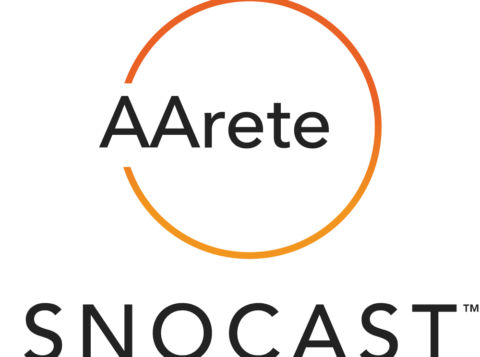Outdated Policies Are Tainting Profitability and Operating Efficiencies
This is an AArete Profitability Improvement insight
Operational improvement is essential as businesses strive to make dividends on significant investments in technology and automation.
Executive Summary:
The ghosts of outdated, detrimental policies and procedures are haunting companies’ operational efficiency and squandering team members’ potential. The past few years have ushered in rapid evolution and unexpected challenges. Technology and automation have played a key role in driving that change — and have been a magnet for significant investments. For many companies, the one thing that hasn’t changed is their old rules and procedures. The consequences of failing to update these internal processes are far-ranging. Fortunately, the rewards for identifying these shortcomings are within reach.
The current market ambiguities and disruptions are forcing organizations to do more with less in 2023 and beyond. Organizations have long been on this journey investing in data and technology, automating key processes and using tools to enable efficiency. But you can’t ‘set it and forget it.’ Legacy policies and slow-moving procedures are holding companies back from realizing the value of their investments and delivering an efficient operations model.
As leaders are tasked with making painful decisions across all business functions, they must consider what is restricting companies from achieving operational excellence and their employees from reaching their full potential.
In the past few years, companies have made significant investments in workflow automation — a market poised for continued growth in the coming years. According to a 2022 Acumen report, the workflow automation market is predicted to reach $78 billion by 2030. Automation tools and systems have ushered in rapid transformation across industries, yet some companies are finding their investments in technology have failed to deliver the desired — or expected — ROIs.
The question inevitably arises at a certain point: “Why?” The answer often doesn’t lie in the recently adopted technologies themselves but rather in the dragging weight of old policies and procedures. Critical processes and business functions are failing to keep up with the tools and investments that those same businesses are making.
Simply put: The way we work has evolved, opening up new possibilities and horizons, but outdated policies have not. If business leaders aim to face future challenges confidently, they’ll need to address outdated policies head on.
As businesses look to optimize their workforces, leaders should take a hard look at whether their policies are aligned with their technological capabilities, best practices, and work to enable employees the ability to meet high productivity for optimal value creation. They just might find that these have become a relic of the past that hinders team members from channeling their time and energy into the sources that hold the highest value. Policies and technologies together should elevate organizational efficiency and effectiveness.
According to a 2020 WorkMarket report, 54 percent of employees believed they could save 240 hours annually through automation. Meanwhile, respondents to a 2020 OnePoll survey said they waste 40 percent of their day on manual digital administrative processes, and 48 percent stated that these tasks were a poor use of their skills.
Surveys like these are not solely illustrating that automation is needed, but rather, existing policies and best practices need to be updated to reflect advancements in automation. It is critical to not only deliver the greatest return on investment; it’s about giving employees the opportunity and time to focus on the most valuable activities.
Recognizing the problems that legacy policies and practices are causing is not enough. Awareness only holds value when it’s followed by action. And the time to act is now.
The Constrictive Nature of Outdated Policies
In the continuously evolving technological landscape, drastic changes can occur — and have — in the span of two years. For many companies, one thing that hasn’t changed is their internal processes and policies. Outdated rules and policies often drive bad decisions. If the ghosts of policies past haven’t come back to haunt organizations yet, it’s only a matter of time. Which policies have become negative forces will vary from business to business, but, in one form or another, they’ll be recognized as antiquated and unsustainable.

Consider this : A procurement organization was required to manually touch and approve every purchase requisition, down to the most menial expenditures. This was happening despite the organization recently going live with a new ERP platform supported by significant – and drastically underutilized – automation. Upon further review, an opportunity to update policies around purchase approval thresholds that qualified and eliminated 68 percent of manual requisition approvals. By freeing up team members time, they were able to apply their knowledge and expertise to more valuable tasks like strategic sourcing and vendor negotiation.
But this problem isn’t exclusively related to procurement.
For instance, legal professionals are responsible for repetitive processes that could be handled by automation. Robotic process automation (RPA) can tackle 63 percent of these repeatable, tedious tasks in the legal sector, according to 2019 Gartner data.
HR professionals are also increasingly utilizing automation tools to support activities like recruiting and hiring. According to a survey conducted by the Society for Human Resource Management in 2022, nearly one-fourth of organizations relied on automation to support their activities. More than two-thirds said that manual review of applications had been reduced due to automation.
But outdated policies and processes are still holding down organizations.
Some policies and manual processes remain unchanged for a good reason, ensuring organizations adhere to laws and requirements. Still, businesses must keep up with external factors as regulatory authorities update their ever-changing guidelines.
Other factors are less rooted in risk-averse stances. The view that “time is money” equates to soft savings and continues to cause unaddressed misalignments between policy and technological capability. Additionally, sometimes businesses are hesitant to update policies because, after spending so much time and money adapting to new systems and software, it’s just too much of a pain.
The while the reasoning, or lack of attention, that drives neglected or outdated practices and processes may vary, the challenges companies currently face are commonly held.
The Present Landscape
Last year, predictions for the economy spelled trouble in the near future, but as 2022 progressed, these warnings of an economic downturn were gradually pushed back to a later date or reassessed. In January this year, a Bloomberg survey of economists predicted a 70 percent chance of an economic downturn in 2023, but most anticipated it would be mild.
Economic turbulence has become a defining characteristic of the past few years, and that doesn’t look like it will be changing in the years ahead, as interest rate hikes continue and inflationary concerns persist.
As companies cautiously approach the coming months, striving for value creation through operational excellence needs to be a top priority. But many still need to dig in and uproot the cause of persistent issues. It is not as simple as implementing a technology.

If technology can take care of a task, then why isn’t it?
When a high-level leader of a large company is tasked with approving all hires, regardless of their seniority, how much time is subtracted from more valuable activities and goals? For procurement officials who dedicate an unjustifiable amount of time to pouring over small expenses in order to fulfill a mandated requirement, what other possibilities are sacrificed?
These questions aren’t hypothetical, they’re rooted in many organizations’ current reality, and the causes are problematic pieces of a cracking foundation — one vulnerable to external elements and not built to last.
This structural lack of integrity can be traced to redundant cross-functional tasks and procedures. Automation is, by definition, intended to streamline processes, not repeat what someone on a different team has already done.
It also could reflect attempts to make rapid progress without first ensuring policies and processes are up to date with newly integrated systems: multiple software services have been introduced, yet the connective tissue between them is mismatched and dysfunctional.
Whatever the underlying causes might be, there are proven solutions that can help companies achieve operational excellence. They might seem painful to address, but it’s well worth it.
The Perks of Tearing the Band Aid Off
While the frustrations that accompany rooting out and updating archaic policies and procedures are temporary, the benefits are lasting. That’s a lesson many organizations have already learned to be true.
When one organization revised the procedures its procurement team had to follow, it unlocked an ROI on the resources that was long untapped, and freed employees of the mundane, low-value tasks. Consequently, the potential value creation after realigning the policies and procedures, the department grew. In this instance, “trimming the fat” was not related to laying off employees; instead, it was the opposite. By removing the barriers that worked against employees, they were finally able to demonstrate what they offered all along.
At another company, requisition turnaround time was significantly reduced by implementing auto-approval into its internal processes. What initially took seven days was cut to two after new measures were introduced, while the spending queue shrunk from 20 percent of requisitions to 2 percent.
Meanwhile, accounts payable employees at another organization capitalized on early payments and automated RFP responses, affording them more time to explore and foster new supplier relationships.
These are only a few of the many cases that convey the optimistic outlooks that await companies once they finally decide to tear the band aid off and address the lingering effects of past policies.

Past, Present and Future
The pandemic and its subsequent waves and variants are an important reminder that the world is impossible to predict, and things can change instantly.
While some changes may be unwanted, others — like those rendered possible via automation — are welcomed with a ready embrace. However, initially positive outlooks on this front may wind up as unmet expectations. Companies have forced to become agile and resilient, but there has proven to be headwinds preventing organizations from unlocking maximum value from their team.
If companies are unwilling to update their policies and procedures to meet inevitable changes in the moment, they’ll face compounding negative consequences. But facing the daunting undertaking of policy transformation and operational improvement will eventually reap well-earned rewards.
Learn more about AArete’s Digital & Technology solutions
















































































































































































